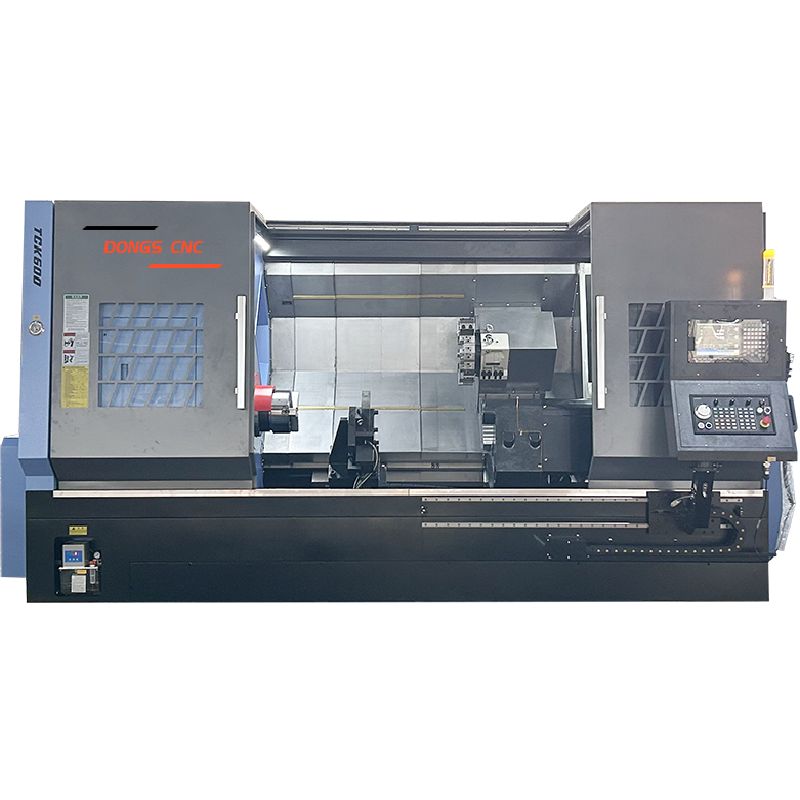The Stability and Accuracy of Flat Bed CNC Lathes
Understanding Stability and Accuracy in Flat Bed CNC Lathes
Stability and accuracy are fundamental concepts in CNC machining, particularly concerning flat bed CNC lathes. Stability refers to the machine's ability to maintain consistent performance over time, keeping settings intact even during continuous operations. Accuracy, on the other hand, measures how closely the machine can replicate the specified dimensions in the finished product. Using precise engineering standards, manufacturers ensure that flat bed CNC lathes deliver reliable results, adhering to planned specifications.
These attributes are crucial in CNC machining, impacting both the quality and efficiency of production processes. A stable and accurate CNC metal lathe system minimizes material waste by consistently producing components that meet design requirements. Research shows that stable systems can reduce scrap rates by up to 20%, enhancing production efficiency. By maximizing material usage and minimizing errors, these machines play a pivotal role in streamlining operations and boosting profitability.
Key Features of Flat Bed CNC Lathes for Enhanced Performance
The flat bed design of CNC lathes stands out for its horizontal structure, which significantly contributes to increased stability during machining tasks. This design effectively minimizes vibrations that can disrupt the machining process, thereby ensuring improved accuracy. The flat bed accommodates heavier workloads by dispersing weight evenly, making it especially suitable for industrial applications where precision is paramount. It provides a sturdy foundation that reduces movement and maintains the integrity of the machining process, which is essential for achieving high-quality outcomes.
CNC technology elevates the performance of machines like the flat bed lathe by introducing automation, which allows for faster production speeds and the creation of intricate designs. With the implementation of CNC systems, manufacturers can see productivity increases by approximately 30%, as these systems enhance operational efficiency and reduce manual intervention. This technological capability not only accelerates production times but also ensures consistent quality control, a critical factor for manufacturers aiming for precision in mass production. The automation offered by CNC technology is an attractive benefit for industries looking to optimize their manufacturing processes and output.
How Flat Bed CNC Lathes Ensure Precision
Flat Bed CNC Lathes excel in precision by leveraging Computer Numerical Control (CNC) technology. By converting complex design specifications into precise machine language, CNC systems guide tools with unmatched accuracy, ensuring that each component aligns with its intended design with minimal deviation. This transformation is fundamental to achieving high precision in CNC metal lathe operations. For manufacturers, this means consistently producing intricate and detailed parts without the inconsistencies often associated with manual machining.
However, various factors can influence machining accuracy. Tool wear, improper machine alignment, and temperature fluctuations are significant concerns that can lead to errors. Regular maintenance and adherence to industry-standard calibration practices are crucial to minimize these impacts. Regular checks ensure that disruptions are kept at bay, and the CNC lathe machine operates seamlessly. Therefore, understanding and controlling these factors is critical for manufacturers who rely on CNC turning operations to produce high-quality, precise components.
Comparing Flat Bed and Slant Bed CNC Lathes
Flat bed and slant bed CNC lathes are distinguished by their unique structural designs, which cater to different industrial applications. Flat bed lathes feature a rigid, horizontal frame that supports heavier workloads, making them ideal for machining large parts. This design ensures stability and a low center of gravity, essential for heavy-duty tasks. In contrast, slant bed lathes have an inclined structure, facilitating efficient chip removal and reducing the risk of tool wear. The inclined plane, typically set at angles between 30° and 75°, allows for better chip evacuation by leveraging gravity, which is crucial in maintaining precision and prolonging the machine's life.
In industries such as aerospace and automotive, where the machining of large components is commonplace, flat bed CNC lathes offer significant advantages. Their robust construction provides exceptional stability, ensuring that precision is maintained even under strenuous conditions. This is why flat bed designs are often preferred for tasks that demand the machining of large parts, where stability and a firm base are critical. Meanwhile, slant bed lathes excel in producing small to medium-sized parts with high precision and speed, benefiting from their advanced chip removal capabilities and suitability for complex geometries.
Applications of Flat Bed CNC Lathes Across Industries
Flat bed CNC lathes play a crucial role in various industries, including automotive, aerospace, and manufacturing, by providing the capability to handle large components and achieve high precision in machining tasks. These industries often deal with complex parts that require exact dimensions and consistency, making the stability and accuracy of flat bed CNC lathes particularly valuable. The automotive industry uses these machines to produce parts like brake discs and engine components, whereas aerospace applications include the creation of intricate components for aerodynamics and structural integrity.
Specific machining tasks ideally suited for flat bed CNC lathes involve operations that demand high accuracy and stability, such as turning operations and threading. These machines excel in scenarios where precise dimensions and smooth surface finishes are essential, ensuring that products meet stringent quality and consistency standards. By effectively performing these tasks, flat bed CNC lathes help improve product quality, reduce material waste, and increase production efficiency. Their robust design minimizes vibrations and enhances precision, making them indispensable in precision machining environments.
Featured Product: Slant Bed CNC Lathe
The Slant Bed CNC Lathe is engineered for continuous operation and high efficiency, making it a perfect fit for high-speed machining environments. Its design enhances chip removal and minimizes vibration, ensuring smoother and more precise operations. These features make the slant bed CNC lathe highly suited for demanding manufacturing settings where accuracy and consistency are paramount.
Technically, the Slant Bed CNC Lathe boasts features such as a high-torque spindle, automatic tool changers, and a range of control interfaces. These attributes enable it to handle complex machining tasks, providing manufacturers with flexible operational capabilities. The capacity for more intricate operations further solidifies its role in the engineering and production sectors, meeting the needs of modern, dynamic manufacturing processes.
FAQ
What is the primary difference between flat bed and slant bed CNC lathes?
The main difference lies in their structural design. Flat bed CNC lathes have a horizontal frame suitable for heavier workloads and larger parts due to their stability. In contrast, slant bed CNC lathes have an inclined design that facilitates better chip removal and is ideal for small to medium-sized parts requiring precision.
How does CNC technology improve the performance of flat bed CNC lathes?
CNC technology introduces automation, enhancing operational efficiency and accuracy. It allows for faster production speeds, consistent quality control, and reduces manual intervention, leading to a 30% increase in productivity.
Why is regular maintenance important for CNC lathes?
Regular maintenance is crucial to address tool wear, improper alignment, and temperature fluctuations which can affect machining accuracy. It ensures that the CNC lathe operates smoothly with minimal disruptions.


